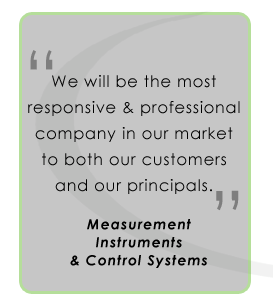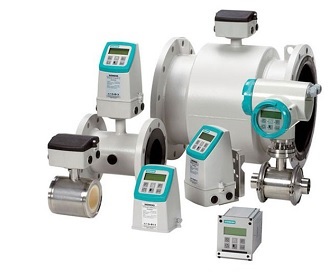|
Siemens asks: What are the advantages and disadvantages between a mechanical flow meter and a magnetic flow meter?
What are the differences between the two flow meters?
The primary difference between a mechanical meter and a
magnetic meter is that a mechanical meter has moving parts and a mag meter doesn’t. Typical examples of mechanical meters are target meters, where liquid hits a spring loaded plate and the amount of movement of that plate relates to velocity, and turbine meters, where liquid flowing over a set of angled blades causes those blades to rotate and that velocity is used to determine flow rate. Another example would be a positive displacement (PD) or oval gear meter where a set amount of material moves through chambers and the amount of material that moves through these chambers as they rotate is counted and converted to flow rates. There are other mechanical designs, but you get the picture.
A mag meter works by having a conductive liquid flow through a lined flow tube and of the flow passing through a magnetic field generated as part of the flow tube design causes a voltage to be created. This voltage increases or decreases based on velocity. So, as long as the material meets the minimum conductivity level, there are no moving parts (mechanical motion) in the flow meter itself required to measure the flow rate through the meter.
Okay, now that we have a basic concept of each flow meter, what are the advantages and disadvantages?
Let’s start with the most basic aspect of a mechanical flow meter, and the fact that it is mechanical.
Disadvantage
Solution
Let’s look at the three mechanical examples that
were provided at the beginning of this article.
A target meter is spring loaded and needs a certain level of resistance in order to work to the design specifications. As the spring compresses and releases over time, the tension changes and, so does the accuracy. The target itself also has a specific surface area that is necessary for best performance and when the edges wear down, that surface area changes and so does the performance.
A turbine meter has blades that are specifically configured to rotate at a given speed for a given flow velocity. As the blades wear, that geometry changes and so does performance. Also, the ability of the blades to spin is related to the friction, or lack thereof, of the bearings that are part of the blade assembly. When the bearings wear, they require more energy to turn at the same rate. Again, we are talking about maintenance and eventual replacement.
In the last example, PD and oval gear meters
are discussed. These are heavily geared meters with a lot of moving parts that work in mesh with each other to move material through them. The gears and bearings that move these gears are prone to wear and again, need maintenance and eventual replacement.
Magnetic flow meters, on the other hand, do not require as much maintenance as mechanical meters do. Now, that’s not to say that they never need maintenance or never need to be replaced. Any flow measurement device should be checked from time to time to make sure it is working properly and providing accurate flow measurement. Without the mechanical issues associated with moving part flow meter designs, mag meters can have more extended maintenance cycles and an overall longer lifespan at the expected accuracy, without the need for replacement.
|




 To
f
To
f For additional information
please contact FLW Southeast
For additional information
please contact FLW Southeast